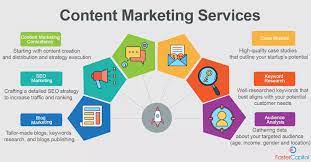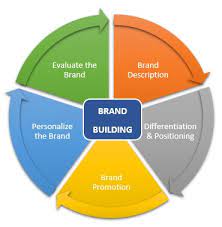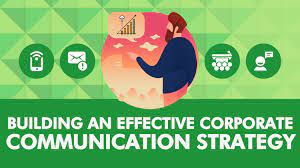Mastering Internal Communication Strategies: Building Stronger Connections within Your Organization
Internal Communication Strategies: Building Stronger Connections within Your Organization
Effective internal communication is the lifeblood of any successful organization. It fosters collaboration, boosts employee engagement, and enhances overall productivity. In today’s fast-paced business world, where remote work and global teams are becoming increasingly common, having robust internal communication strategies is more important than ever.
So, what exactly are internal communication strategies? Put simply, they are the deliberate plans and tactics implemented to ensure smooth information flow within an organization. These strategies encompass various channels, tools, and approaches that help disseminate information, facilitate dialogue, and build stronger connections among employees at all levels.
One key aspect of effective internal communication is transparency. Openness in sharing information helps employees feel valued and trusted. When employees are well-informed about company updates, goals, and challenges, they can align their efforts accordingly. Regular newsletters, intranet portals, or town hall meetings can be used to keep employees informed about important developments within the organization.
Another crucial element of internal communication is two-way dialogue. It’s not just about pushing information from top management to employees but also creating opportunities for feedback and discussion. This can be achieved through surveys, suggestion boxes, or dedicated forums where employees can voice their opinions and concerns. Actively listening to employee feedback shows that their voices matter and helps in identifying areas for improvement.
In addition to traditional methods of communication like emails and meetings, organizations should embrace digital tools that facilitate collaboration and knowledge sharing. Platforms such as project management software or team messaging apps provide real-time updates on tasks, enable seamless collaboration across departments or teams irrespective of geographical locations.
Moreover, storytelling is a powerful tool in internal communication. Sharing success stories or narratives that highlight employee achievements not only boosts morale but also reinforces company values and culture. These stories inspire others while fostering a sense of pride in the collective accomplishments of the organization.
Furthermore, it’s important to tailor internal communication strategies to suit the diverse needs of employees. Different teams or departments may have unique communication preferences or requirements. Some may prefer face-to-face meetings, while others may rely more on digital platforms. Understanding these preferences and adapting communication methods accordingly ensures maximum engagement and participation.
Lastly, measurement and evaluation are essential to gauge the effectiveness of internal communication strategies. Regular feedback surveys or analytics on engagement levels can provide valuable insights into what’s working well and what needs improvement. This data-driven approach helps organizations refine their strategies over time and ensures continuous growth in internal communication practices.
In conclusion, effective internal communication strategies are vital for building stronger connections within your organization. By prioritizing transparency, encouraging two-way dialogue, leveraging digital tools, sharing stories, tailoring approaches, and measuring success, businesses can foster a culture of open communication that drives employee engagement and ultimately leads to organizational success.
Remember, investing in internal communication is an investment in your people – the heart of your organization.
9 Frequently Asked Questions About Internal Communication Strategies: A Comprehensive Guide for Success in the UK
- What are the most effective internal communication strategies?
- How can I improve my internal communication strategy?
- How do I ensure employees receive the right messages at the right time?
- How do I measure the success of an internal communication strategy?
- What tools and technologies should I use for internal communications?
- How do I ensure all employees understand and follow an internal communication strategy?
- What are best practices for creating an effective internal communication plan?
- How can I encourage collaboration and engagement through internal communications?
- What are some tips for improving employee morale through effective internal communications?
What are the most effective internal communication strategies?
There are several effective internal communication strategies that organizations can implement to foster strong connections and improve communication within their teams. Here are some of the most impactful strategies:
- Clear and Transparent Communication: Openness and transparency in sharing information are crucial for building trust among employees. Clearly communicate company updates, goals, and challenges through regular newsletters, intranet portals, or town hall meetings.
- Two-Way Dialogue: Encourage two-way communication by providing channels for feedback and discussion. Surveys, suggestion boxes, or dedicated forums allow employees to voice their opinions, concerns, and ideas. Actively listen to their feedback and respond appropriately.
- Digital Collaboration Tools: Embrace digital tools that facilitate collaboration and knowledge sharing among employees. Project management software, team messaging apps, or intranet platforms enable real-time updates on tasks, seamless collaboration across departments or teams, and easy access to important information.
- Storytelling: Share success stories or narratives that highlight employee achievements and reinforce company values. These stories inspire others while fostering a sense of pride in the collective accomplishments of the organization.
- Tailored Communication Approaches: Recognize that different teams or departments may have unique communication preferences or requirements. Understand these preferences and adapt communication methods accordingly to ensure maximum engagement and participation.
- Leadership Visibility: Leaders should actively engage in internal communication efforts by regularly communicating with employees at all levels. This can be done through face-to-face meetings, virtual town halls, or video messages to demonstrate their commitment to open communication.
- Training Programs: Provide training programs on effective communication skills for managers and employees alike. These programs can help improve interpersonal skills, active listening abilities, conflict resolution techniques, and overall communication effectiveness.
- Recognition Programs: Implement employee recognition programs that celebrate achievements and contributions within the organization. Recognizing employees’ efforts publicly not only boosts morale but also reinforces a culture of appreciation and motivation.
- Consistent and Timely Communication: Ensure that communication is consistent and timely across all levels of the organization. Regularly update employees on important information, changes, or initiatives to keep them informed and engaged.
- Measurement and Evaluation: Establish metrics to measure the effectiveness of internal communication strategies. Regularly assess engagement levels, feedback surveys, or analytics to gain insights into what’s working well and identify areas for improvement.
Remember that the most effective internal communication strategies are tailored to the unique needs and culture of your organization. Continuously evaluate and adapt your strategies based on feedback and evolving communication trends to foster a culture of open communication and collaboration.
How can I improve my internal communication strategy?
Improving your internal communication strategy is a continuous process that requires careful evaluation and adaptation. Here are some key steps you can take to enhance your internal communication strategy:
- Assess Current Practices: Start by evaluating your existing internal communication methods and channels. Identify what is working well and what needs improvement. Gather feedback from employees to gain insights into their communication needs and preferences.
- Set Clear Goals: Define clear objectives for your internal communication strategy. What do you want to achieve? Whether it’s improving information sharing, enhancing employee engagement, or fostering a collaborative culture, clearly outline your goals to guide your efforts.
- Foster a Culture of Communication: Encourage open and transparent communication throughout the organization. Leaders should lead by example, actively communicating with employees and creating an environment where everyone feels comfortable sharing ideas, concerns, and feedback.
- Use Multiple Channels: Utilize a mix of communication channels to reach different employee groups effectively. Consider using emails, intranet portals, newsletters, team messaging apps, video conferencing tools, or social media platforms depending on the nature of the message and the preferences of your employees.
- Tailor Messages: Different messages may require different approaches. Ensure that you tailor your messages based on the target audience’s needs and understanding level. Use clear and concise language while avoiding jargon or technical terms that may hinder comprehension.
- Provide Regular Updates: Keep employees informed about important company updates, changes in policies or procedures, new initiatives, or organizational goals through regular updates via newsletters, town hall meetings, or dedicated communication channels.
- Encourage Two-Way Communication: Create opportunities for employees to provide feedback and engage in dialogue with management and colleagues. Implement mechanisms such as surveys, suggestion boxes, focus groups, or dedicated forums where employees can share their thoughts and ideas.
- Embrace Digital Tools: Leverage technology to facilitate collaboration and knowledge sharing among employees across different locations or teams. Explore project management software, team messaging apps, or intranet platforms to streamline communication and improve productivity.
- Train and Educate: Provide training and resources to employees on effective communication techniques. Offer workshops or webinars on active listening, conflict resolution, or email etiquette to enhance communication skills across the organization.
- Measure and Evaluate: Regularly assess the effectiveness of your internal communication strategy through feedback surveys, analytics, or engagement metrics. Use this data to identify areas for improvement and make necessary adjustments to your strategy.
Remember, improving internal communication is an ongoing process. Continuously seek feedback from employees, adapt your strategies based on their needs, and stay updated with emerging trends and technologies in the field of internal communication. By prioritizing effective internal communication, you can foster a more engaged and connected workforce that drives organizational success.
How do I ensure employees receive the right messages at the right time?
Ensuring that employees receive the right messages at the right time is crucial for effective internal communication. Here are some strategies to help you achieve this:
- Segment your audience: Understand that not all employees have the same information needs. Segment your audience based on factors such as their roles, departments, or locations. This allows you to tailor your messages and deliver relevant information to specific groups.
- Use multiple channels: Utilize a mix of communication channels to reach employees effectively. Consider using email, intranet portals, team messaging apps, digital signage, or even face-to-face meetings depending on the nature of the message and the preferences of your employees. Different channels have different strengths and can be used strategically to ensure maximum reach and impact.
- Develop a communication calendar: Plan your communication in advance by creating a communication calendar. This helps you organize and schedule messages according to their importance, urgency, or relevance. By having a clear plan, you can avoid overwhelming employees with too many messages at once and ensure that important information doesn’t get lost in the noise.
- Prioritize key messages: Identify key messages that are critical for all employees to know and understand. These could include company-wide updates, policy changes, or important announcements. Ensure that these messages are communicated promptly and consistently across all relevant channels to avoid confusion or misinformation.
- Consider timing: Timing is crucial when it comes to delivering messages effectively. Take into account factors such as work schedules, time zones (if applicable), and employee availability when determining when to send out communications. Avoid sending important messages during busy periods or outside regular working hours when employee attention may be divided.
- Encourage feedback and questions: Create opportunities for employees to provide feedback or ask questions about the information they receive. This can be done through dedicated feedback channels like suggestion boxes or online forums where employees can engage in dialogue with management or their peers. Actively listening and responding to employee inquiries helps ensure that their concerns are addressed and that messages are understood.
- Provide context and clarity: When delivering messages, provide sufficient context and clarity to help employees understand the purpose, relevance, and impact of the information. Avoid using jargon or technical terms that may confuse or alienate certain employees. Use clear and concise language to convey your message effectively.
- Follow up and reinforce: For important or complex messages, consider follow-up actions to reinforce the information communicated. This could include providing additional resources, conducting training sessions, or organizing Q&A sessions to address any lingering questions or concerns.
Remember, effective communication is an ongoing process. Regularly evaluate your internal communication strategies, seek feedback from employees, and make adjustments as needed to ensure that your messages are reaching the right people at the right time in a meaningful way.
How do I measure the success of an internal communication strategy?
Measuring the success of an internal communication strategy is essential to understand its effectiveness and make any necessary adjustments. Here are some key metrics and methods you can use to evaluate the impact of your internal communication efforts:
- Employee Surveys: Conduct regular surveys to gather feedback from employees regarding their satisfaction levels, understanding of company goals, and overall engagement. Ask specific questions related to communication channels, clarity of information, and opportunities for feedback. Analyze the survey results to identify trends and areas for improvement.
- Communication Channel Analytics: Utilize analytics tools provided by various communication channels such as intranet portals or team messaging apps. Track metrics like open rates, click-through rates, or engagement levels to determine which channels are most effective in reaching employees and driving interaction.
- Feedback Mechanisms: Implement feedback mechanisms such as suggestion boxes, dedicated email addresses, or online forums where employees can share their thoughts and suggestions anonymously if they prefer. Monitor the quantity and quality of feedback received to assess the level of employee involvement in the communication process.
- Employee Performance Metrics: Analyze employee performance metrics before and after implementing a communication strategy. Look for improvements in productivity, teamwork, or overall job satisfaction that can be attributed to enhanced internal communication practices.
- Company-wide Metrics: Examine broader organizational metrics like employee turnover rates, absenteeism levels, or customer satisfaction scores. A well-executed internal communication strategy can positively impact these indicators by fostering a sense of belonging, motivation, and alignment with company values.
- Focus Groups or Interviews: Conduct focus groups or individual interviews with employees from different departments or hierarchical levels to gain qualitative insights into their perception of internal communication efforts. This approach allows for more in-depth discussions on specific topics and provides valuable anecdotal evidence.
- Management Feedback: Seek feedback from managers or team leaders regarding their observations on the effectiveness of internal communication within their teams. Their insights can provide valuable perspectives on how well information is cascaded and understood at different levels of the organization.
Remember, measuring the success of internal communication is an ongoing process. Regularly review and analyze the collected data to identify trends, patterns, and areas for improvement. Use these insights to refine your communication strategies and ensure continuous growth in fostering effective internal communication within your organization.
What tools and technologies should I use for internal communications?
When it comes to internal communications, there are several tools and technologies available that can enhance collaboration, streamline information sharing, and improve overall communication within your organization. Here are some popular options:
- Intranet Platforms: Intranet platforms provide a centralized hub for employees to access company news, updates, documents, and resources. They often include features such as discussion boards, employee directories, and document sharing capabilities.
- Team Messaging Apps: Tools like Slack, Microsoft Teams, or Google Chat enable real-time messaging and collaboration among teams. They allow for quick communication, file sharing, and the creation of dedicated channels for different projects or departments.
- Project Management Software: Project management tools like Asana, Trello, or Basecamp help teams organize tasks, set deadlines, track progress, and collaborate on projects in a transparent manner. They provide a clear overview of project status and facilitate communication around specific tasks.
- Video Conferencing Tools: Platforms such as Zoom or Microsoft Teams have become essential for remote work scenarios or connecting with geographically dispersed teams. Video conferencing enables face-to-face communication and virtual meetings that can enhance engagement and collaboration.
- Employee Feedback Tools: Tools like SurveyMonkey or Google Forms allow you to create surveys to gather feedback from employees on various topics such as company culture, employee satisfaction, or specific initiatives. These tools help in understanding employee sentiments and identifying areas for improvement.
- Internal Social Networks: Internal social networking platforms like Yammer or Workplace by Facebook provide a space for employees to connect informally, share updates or ideas across departments or locations. These platforms foster engagement and encourage employee interaction beyond traditional hierarchical boundaries.
- Digital Signage: Digital signage solutions can be used to display important announcements or updates in common areas within the office premises. They are especially useful for reaching employees who may not have regular access to computers or email.
- Mobile Apps: Developing a custom mobile app for your organization can provide employees with easy access to company news, updates, and resources on their smartphones. Mobile apps can also include features like push notifications and instant messaging for quick communication.
It’s important to assess your organization’s specific needs and choose tools that align with your communication goals, company culture, and budget. Keep in mind that while technology is valuable, it’s equally important to establish clear communication guidelines and encourage a culture of open dialogue within your organization.
How do I ensure all employees understand and follow an internal communication strategy?
Ensuring that all employees understand and follow an internal communication strategy is crucial for its success. Here are some key steps to help you achieve this:
- Clear Communication Plan: Develop a clear and comprehensive communication plan that outlines the objectives, channels, and frequency of internal communication. Clearly communicate this plan to all employees, emphasizing its importance and how it aligns with the organization’s goals.
- Training and Onboarding: Incorporate internal communication training as part of the onboarding process for new employees. Educate them about the communication channels, tools, and expectations within the organization. Existing employees should also receive regular training updates to reinforce the importance of effective internal communication.
- Consistent Messaging: Ensure consistent messaging across all levels of the organization. This can be achieved by providing guidelines or templates for internal communications such as emails, newsletters, or memos. Consistency helps employees understand what is expected from them in terms of content, tone, and timing.
- Engage Leadership: Leaders play a crucial role in setting an example for effective internal communication. Encourage leaders to actively participate in communication efforts by regularly sharing updates, providing feedback opportunities, and promoting open dialogue with their teams.
- Utilize Multiple Channels: People have different preferences when it comes to receiving information. Utilize a variety of channels such as email, intranet portals, team messaging apps, or video conferencing tools to ensure that information reaches all employees effectively.
- Feedback Mechanisms: Establish feedback mechanisms that allow employees to provide input or ask questions regarding internal communication processes. This can be done through surveys, suggestion boxes, or dedicated forums where employees can voice their concerns or suggestions.
- Recognize and Reward Communication Excellence: Acknowledge individuals or teams who consistently demonstrate excellent internal communication practices. Recognizing their efforts not only motivates them but also sets an example for others to follow.
- Continuous Evaluation: Regularly evaluate the effectiveness of your internal communication strategy. Collect feedback from employees through surveys or focus groups to identify areas for improvement. Use this feedback to refine your strategies and ensure they remain relevant and impactful.
- Foster a Culture of Communication: Encourage a culture of open communication where employees feel comfortable expressing their ideas, concerns, and suggestions. Foster an environment where everyone’s voice is heard and valued.
- Regular Communication Updates: Keep employees informed about the progress, outcomes, and impact of internal communication efforts. Share success stories or case studies that demonstrate how effective internal communication has contributed to the organization’s achievements.
By implementing these steps, you can increase employee understanding and engagement with your internal communication strategy, leading to improved collaboration, productivity, and overall organizational success.
What are best practices for creating an effective internal communication plan?
Creating an effective internal communication plan is crucial for organizations to ensure smooth information flow, foster collaboration, and engage employees. Here are some best practices to consider when developing your internal communication plan:
- Set Clear Objectives: Start by defining the goals and objectives of your internal communication plan. What do you want to achieve? Whether it’s improving employee engagement, aligning teams with company values, or enhancing knowledge sharing, clearly outlining your objectives will guide your communication efforts.
- Know Your Audience: Understand the diverse needs and preferences of your employees. Consider factors such as their roles, locations, and communication preferences. Tailor your messages and channels to effectively reach different segments of your workforce.
- Choose the Right Channels: Utilize a mix of communication channels to cater to different types of information and audience preferences. Options include email newsletters, intranet portals, team messaging apps, video conferencing tools, or even physical notice boards. Consistently evaluate the effectiveness of each channel and adjust accordingly.
- Be Consistent: Maintain a consistent tone, branding, and messaging across all internal communications. This helps build familiarity and trust among employees while reinforcing company culture and values.
- Foster Two-Way Communication: Encourage dialogue and feedback from employees by creating opportunities for them to share their thoughts or ask questions. Use surveys, suggestion boxes, town hall meetings, or dedicated forums to foster a culture of open communication where everyone feels heard.
- Provide Timely Information: Ensure timely dissemination of important updates or announcements within the organization. Keeping employees informed about changes in strategy, company performance, or industry trends helps align their efforts towards shared goals.
- Keep It Engaging: Make internal communications interesting and engaging to capture employees’ attention. Use storytelling techniques or visual aids such as infographics or videos to convey messages effectively.
- Empower Managers as Communicators: Equip managers with the necessary resources and training to be effective communicators within their teams. They play a crucial role in cascading information, addressing concerns, and fostering a positive communication culture.
- Measure and Evaluate: Regularly assess the effectiveness of your internal communication efforts. Use metrics like engagement levels, feedback surveys, or reach of communications to gauge success and identify areas for improvement.
- Evolve and Adapt: Internal communication is an ongoing process. Stay agile and adapt your strategies as needed based on feedback, changing employee needs, or emerging technologies. Continuously seek ways to enhance your internal communication practices.
By following these best practices, organizations can create a robust internal communication plan that drives employee engagement, collaboration, and ultimately contributes to the overall success of the business.
How can I encourage collaboration and engagement through internal communications?
Encouraging collaboration and engagement through internal communications is crucial for fostering a positive and productive work environment. Here are some strategies to achieve this:
- Create a Shared Vision: Clearly communicate the organization’s goals, values, and mission to all employees. When everyone understands the bigger picture, it becomes easier for them to align their efforts and collaborate towards shared objectives.
- Foster Two-Way Communication: Establish channels that facilitate open dialogue between employees and management. Encourage feedback, suggestions, and ideas from all levels of the organization. Actively listen to employee input and provide timely responses to show that their opinions are valued.
- Utilize Digital Collaboration Tools: Implement digital platforms that enable seamless collaboration across teams and departments. Project management software, team messaging apps, or intranet portals can help employees share information, collaborate on tasks, and stay connected regardless of physical location.
- Encourage Cross-Functional Collaboration: Create opportunities for employees from different departments or teams to work together on projects or initiatives. This not only promotes knowledge sharing but also fosters a sense of unity and breaks down silos within the organization.
- Recognize and Celebrate Achievements: Acknowledge employee contributions by celebrating milestones, successes, or outstanding performances. Publicly recognize individuals or teams through internal newsletters, social media platforms, or company-wide meetings. This boosts morale and encourages further engagement.
- Share Best Practices: Encourage employees to share their expertise and best practices with others in the organization. This can be done through internal webinars, workshops, or knowledge-sharing sessions where employees can learn from each other’s experiences.
- Promote Social Interaction: Create opportunities for informal interactions among employees through social events or team-building activities. This helps build relationships outside of work-related tasks and enhances collaboration when working together on projects.
- Provide Training Opportunities: Offer training programs or professional development opportunities that focus on collaboration skills such as effective communication, conflict resolution, and teamwork. This equips employees with the necessary skills to collaborate and engage effectively.
- Use Visual Communication: Incorporate visual elements such as infographics, videos, or presentations to convey information in a more engaging and memorable way. Visuals can help simplify complex concepts and enhance understanding among employees.
- Measure and Evaluate Engagement: Regularly assess employee engagement levels through surveys or feedback mechanisms. Analyze the results to identify areas for improvement and adjust internal communication strategies accordingly.
Remember, collaboration and engagement thrive when there is a culture of trust, respect, and inclusivity within the organization. By implementing these strategies consistently, you can create an environment that encourages active participation, fosters collaboration, and drives overall success.
What are some tips for improving employee morale through effective internal communications?
Improving employee morale through effective internal communications is crucial for creating a positive and engaged workforce. Here are some tips to help you achieve that:
- Foster a culture of transparency: Be open and honest in sharing information about company updates, goals, and challenges. Employees appreciate being kept in the loop and feeling like valued members of the organization.
- Encourage two-way communication: Create opportunities for employees to provide feedback, ask questions, and share ideas. Actively listen to their input and respond promptly. This demonstrates that their opinions are valued and encourages a sense of ownership within the organization.
- Utilize multiple communication channels: Different employees have different communication preferences. Use a variety of channels such as email, intranet portals, team messaging apps, or face-to-face meetings to reach employees effectively. Find the right balance between digital tools and personal interactions.
- Provide regular updates: Keep employees informed about important developments, projects, or changes within the organization through regular newsletters, team meetings, or town hall sessions. Consistent communication reduces uncertainty and keeps everyone aligned.
- Celebrate successes: Recognize and celebrate employee achievements publicly within the organization. Share success stories or acknowledge outstanding contributions through internal newsletters or social media platforms. This boosts morale and reinforces a positive work culture.
- Promote collaboration: Encourage cross-departmental collaboration by providing platforms for knowledge sharing and idea exchange. Foster teamwork by organizing team-building activities or collaborative projects that bring employees together.
- Simplify complex information: When communicating complex information such as new policies or procedures, make it easily understandable for all employees by using clear language, visual aids, or step-by-step guides.
- Lead by example: Leaders play a crucial role in setting the tone for effective internal communications. Demonstrate open communication practices yourself by being approachable, actively listening to employees’ concerns, and responding with empathy.
- Provide training opportunities: Offer training sessions or workshops on effective communication skills for employees at all levels. This helps improve overall communication within the organization and empowers employees to express themselves confidently.
- Measure and evaluate: Regularly assess the impact of your internal communication efforts. Conduct employee surveys, track engagement levels, and gather feedback to identify areas for improvement. Use this data to refine your strategies and ensure continuous growth.
Remember, improving employee morale through effective internal communications is an ongoing process. By prioritizing open communication, encouraging collaboration, recognizing achievements, and continuously seeking feedback, you can create a positive work environment where employees feel valued and motivated to contribute their best.








